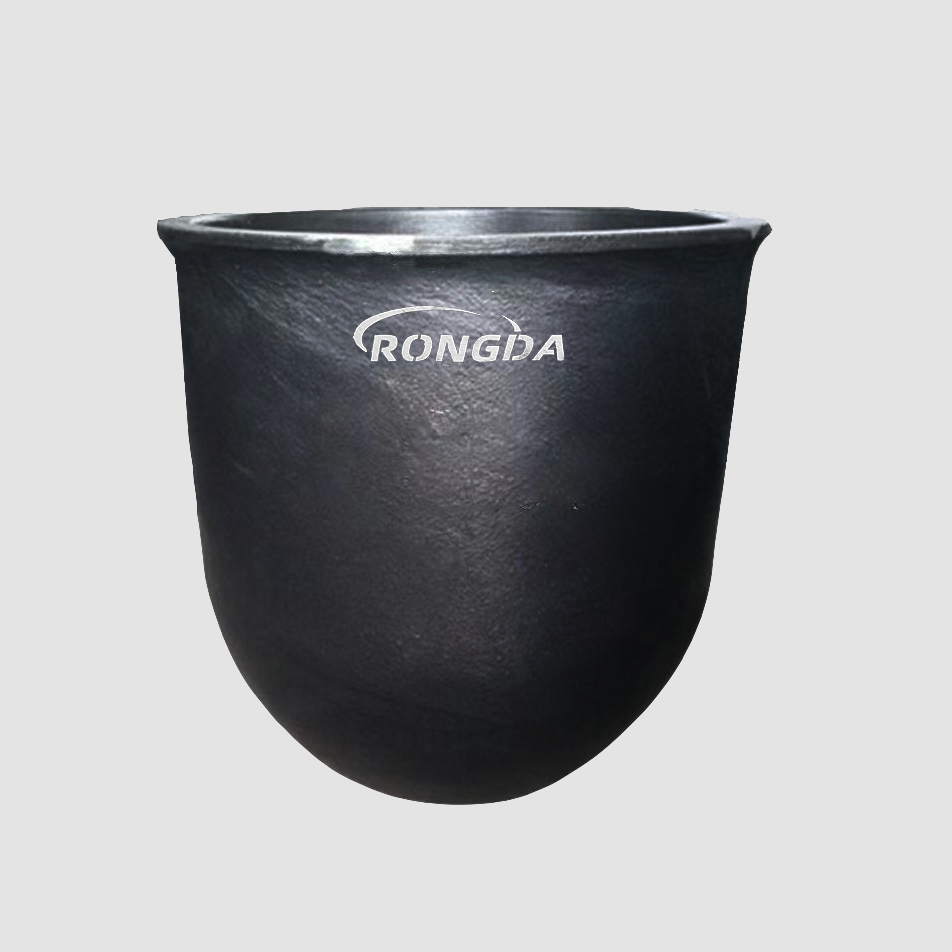
The service life of graphite silicon carbide crucibles is a key factor to consider when using them in various industrial applications. These crucibles are widely used in smelting and casting processes in the metallurgical and foundry industries. Understanding the factors that affect the service life of these crucibles is critical to optimizing their performance and durability.
Operating temperature plays an important role in determining the service life of graphite silicon carbide crucibles. The higher the operating temperature, the lower the service life of the crucible. This is because crucibles undergo greater thermal stress at high temperatures and are more likely to break. It is important to use crucibles within the recommended temperature range to ensure extended service life and prevent premature failure.
The number of uses will also affect the service life of the graphite silicon carbide crucible. After each use, crucibles are subject to wear and corrosion, causing their service life to gradually decrease. The frequency of use directly affects the service life of the crucible, so it is crucial to monitor and evaluate the condition of the crucible after each cycle. Proper maintenance and regular inspections can help extend the life of your crucible and ensure long-term, stable performance.
The chemical environment in which the crucible is used has a great impact on its service life. Graphite silicon carbide crucibles exhibit varying degrees of corrosion resistance in different chemical environments. Exposure to corrosive substances will accelerate the degradation of the crucible, resulting in a shortened service life. It is important to select the appropriate crucible material based on the specific chemical environment in which the crucible will be used to ensure optimal performance and longevity.
How the crucible is used also affects its service life. Improper use, such as subjecting the crucible to sudden temperature changes or placing cold objects in it, can compromise its durability. Proper handling and compliance with recommended operating procedures are critical to maximizing crucible life and preventing premature failure.
Adhesion and the formation of oxide layers within the crucible can also affect its performance and service life. These factors can hinder the crucible's ability to withstand high temperatures and corrosive environments, resulting in a shortened life. Regular cleaning and maintenance can help mitigate the effects of adhesion and oxide formation, helping to extend the life of your crucible.
When evaluating the service life of graphite silicon carbide crucibles, it is important to consider the specific application and operating conditions. Actual service life may vary depending on factors such as method of use, temperature, chemical environment, and frequency of use. Thorough testing and evaluation in the intended operating environment can provide valuable insights into the expected service life of the crucible.
Our graphite silicon carbide crucibles are designed to provide reliable performance and extended service life in a variety of melting applications. When used to melt aluminum, our crucibles provide a service life of 6-7 months, while when used to melt copper, the service life is approximately 3 months. By paying special attention to usage, operating temperatures and chemical environments, our crucibles can maximize their service life, providing consistent, efficient performance for industrial melting and casting processes.
Post time: Mar-25-2024
